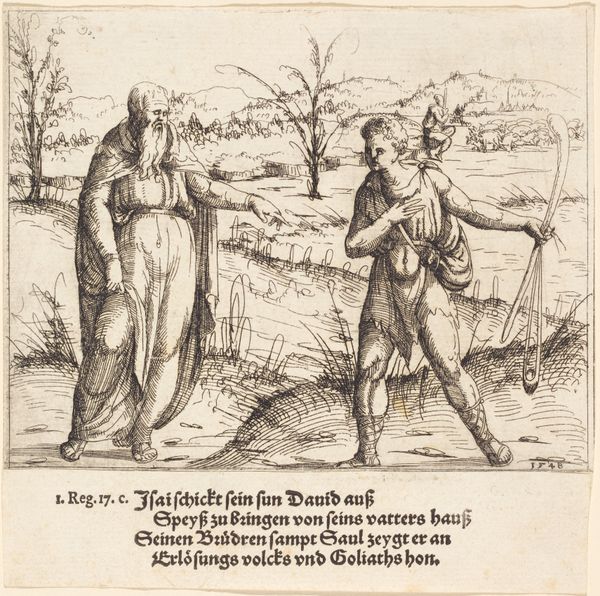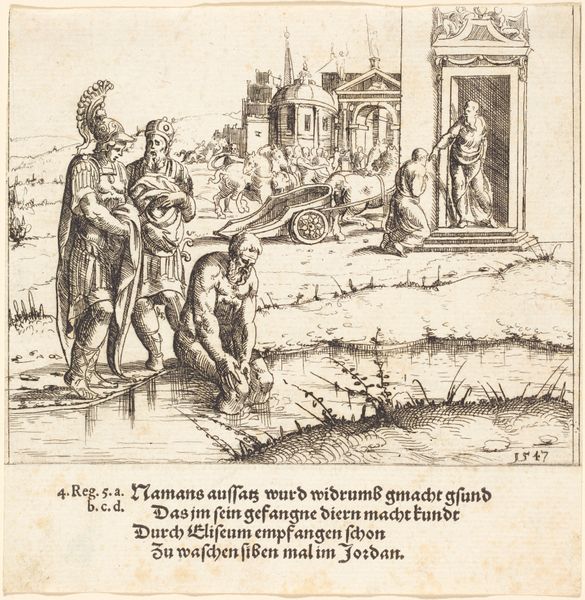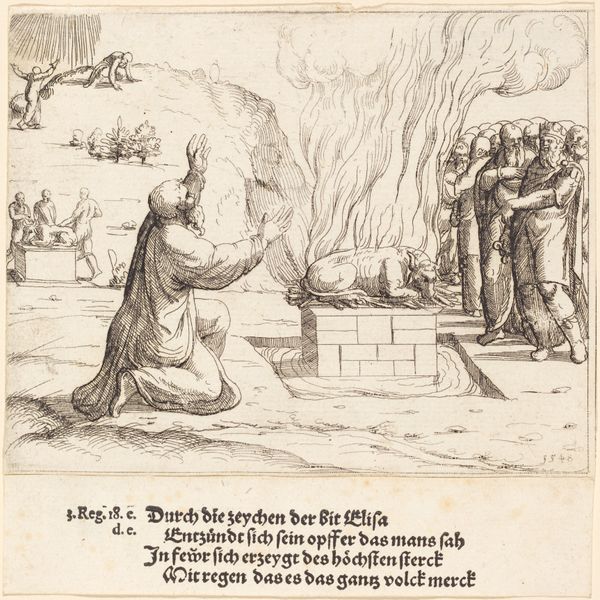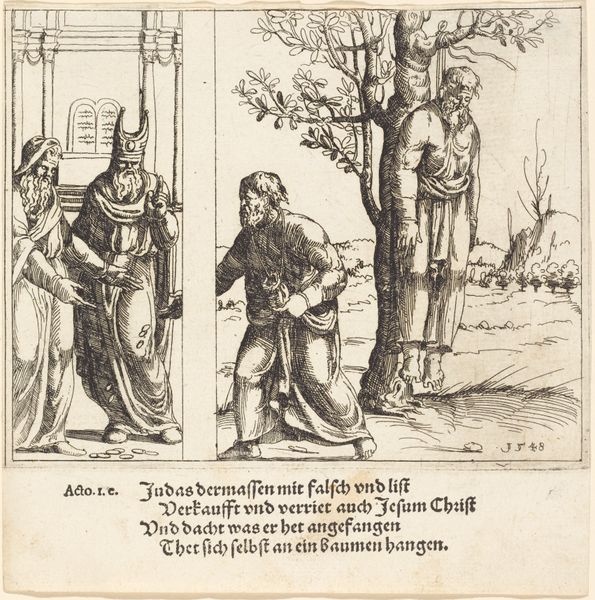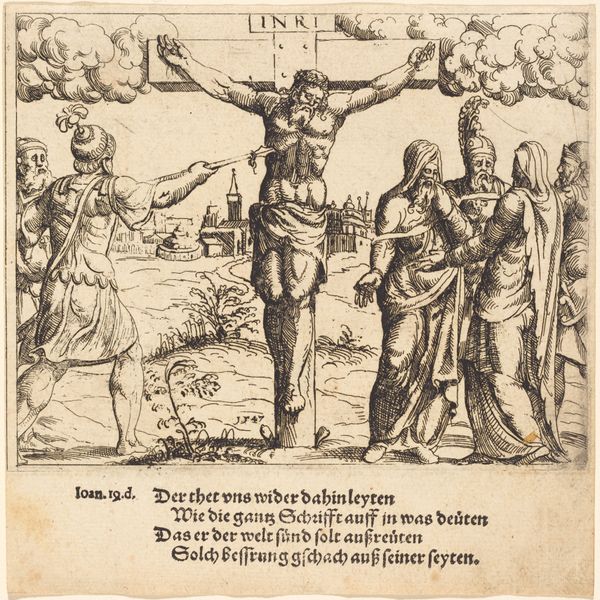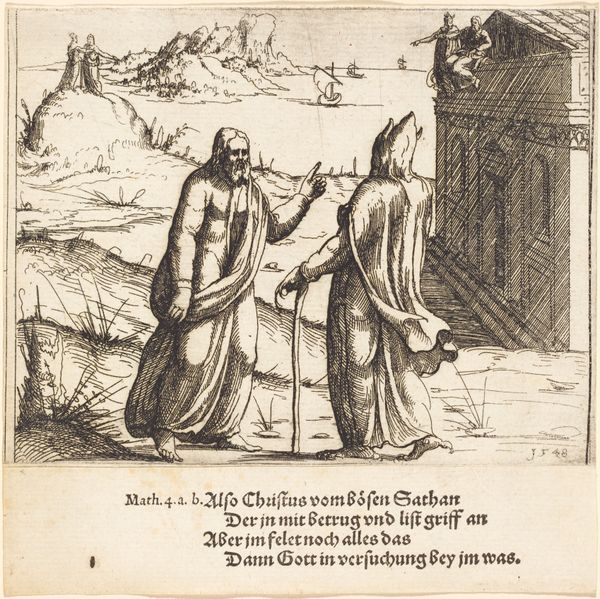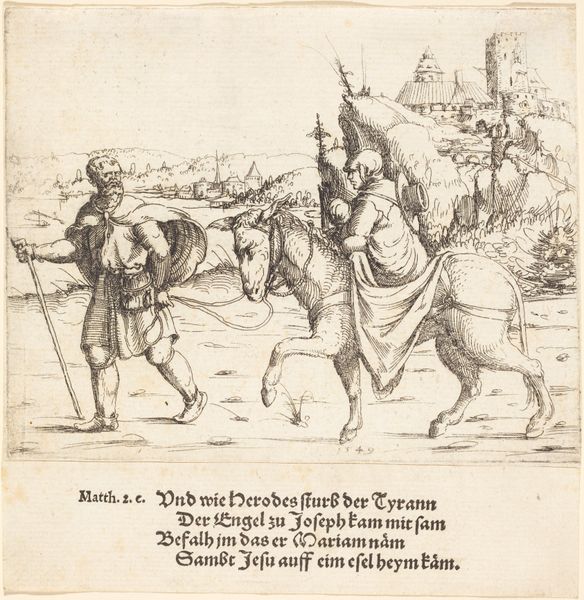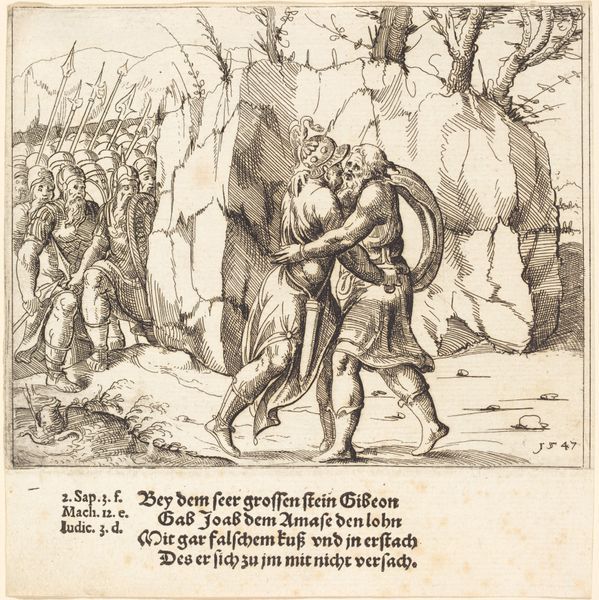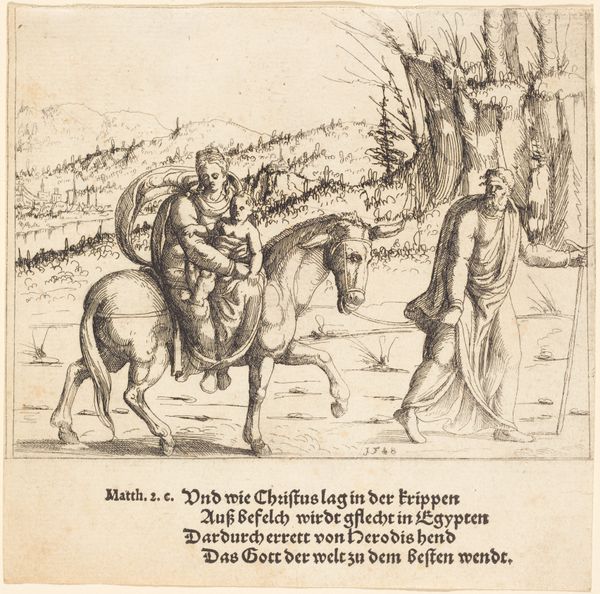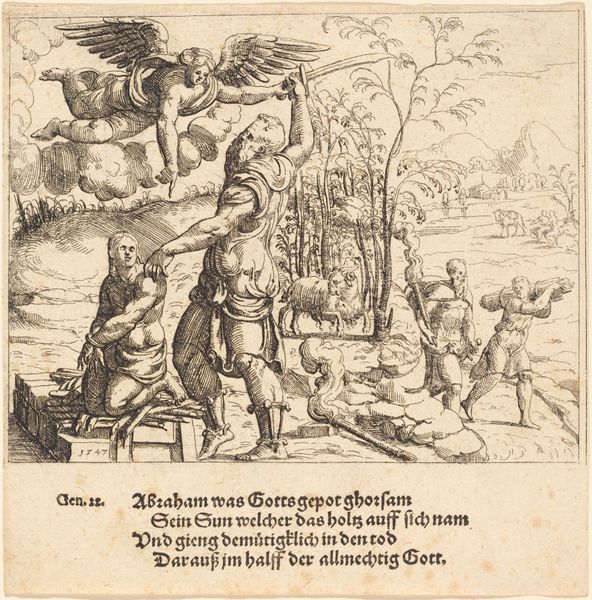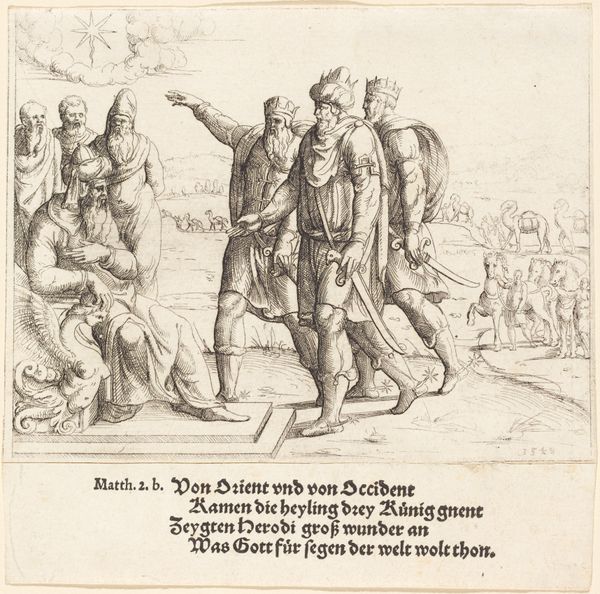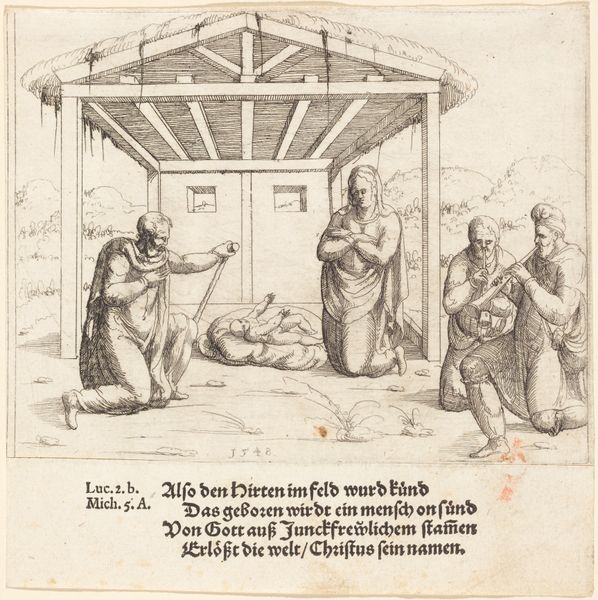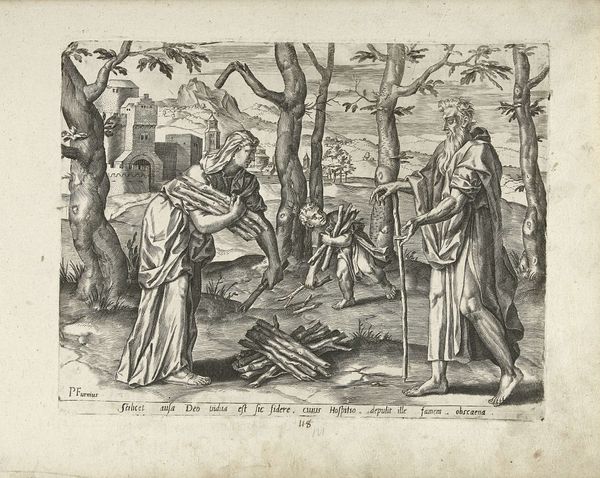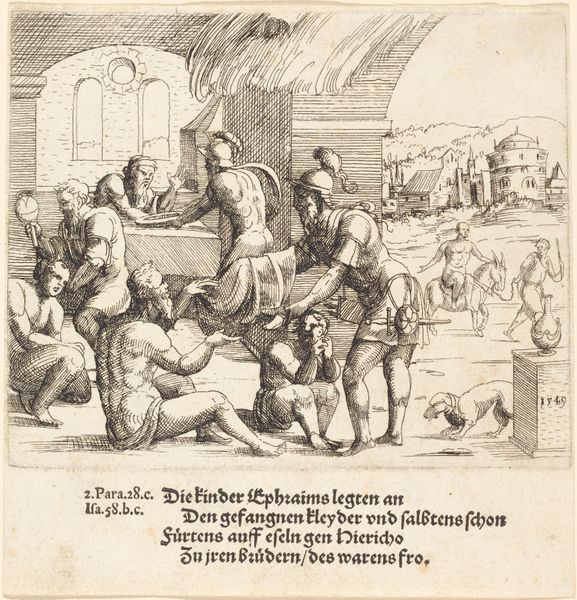
print, engraving
# print
#
landscape
#
figuration
#
line
#
history-painting
#
northern-renaissance
#
engraving
Copyright: National Gallery of Art: CC0 1.0
Curator: Take a look at this engraving, Balak's Sacrifice, and Balaam's Prophecy, created by Augustin Hirschvogel in 1548. It's an interpretation of a biblical narrative, rendered with meticulous line work. Editor: It's stark, isn't it? The linear quality gives it a sort of urgent feel, despite depicting a rather ritualistic scene. The composition feels quite theatrical; it's almost like looking at a stage set. Curator: Precisely! The spatial arrangement does lend a sense of constructed drama. We see Balak and Balaam prominently in the foreground, gesturing towards multiple sacrificial altars blazing in the middle ground. The background is reserved for the divine intervention that's so integral to the story. Hirschvogel packs quite a lot of narrative into one image. Editor: And such economical means, really. It is a reminder of how powerful line alone can be in storytelling. Think of comic books or animation! It's fascinating to see this biblical narrative filtered through the aesthetic sensibilities of the Northern Renaissance. Were such stories particularly potent at the time? Curator: Absolutely. This imagery coincided with religious and political upheaval across Europe. Hirschvogel's decision to portray this particular episode, where Balaam is divinely prevented from cursing the Israelites, certainly resonated with contemporary concerns about divine favor and protection. It plays with ideas about power and influence in a very volatile world. Editor: The visual economy speaks to something else too, I think. Look at how simply the landscape is evoked, or those almost naive renderings of angels. Perhaps there was an active choice to distill this story into an essence—accessible, but layered with significance. This image functions as a kind of public assertion, declaring where loyalties ought to be fixed. Curator: The landscape aspect shouldn't be understated. There’s that star shining atop everything! Its appearance gives context and depth, doesn’t it? The overall impression leaves me wondering just how consciously engaged he was with matters of divine representation. Editor: Well, given the political climate, I suspect those choices weren't arbitrary at all! Considering that even today religious imagery has great symbolic power. Ultimately, it makes you appreciate the power that these smaller, almost unassuming prints, could wield during that time.
Comments
No comments
Be the first to comment and join the conversation on the ultimate creative platform.
